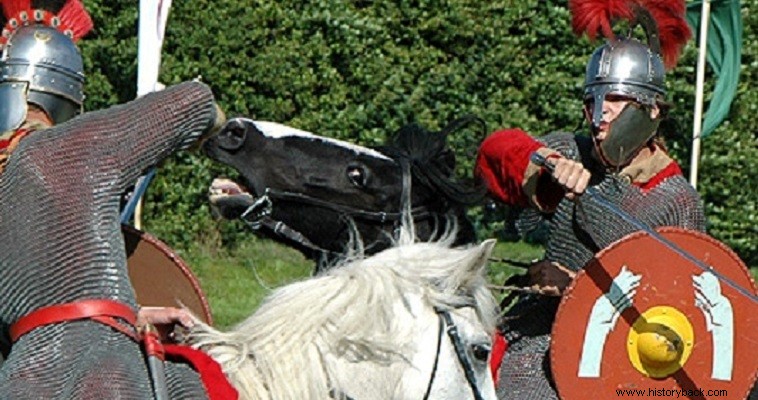
In the spring of 548 AD the situation for the Byzantines in North Africa was not pleasant. The small Byzantine forces had been defeated by the rebellious Numidians. General Ioannis Troglitis, however, who was sent by Justinian, was not one of those who resigned easily.
John moved towards the plain of Arsouris. There he met his Numidian allies whose forces numbered 142,000 men.
The number mentioned by some sources is obviously extremely inflated, even if the total population of the tribes that joined the Byzantines was calculated in it. A figure of 14-15,000 Numidian warriors seems closer to reality and is even so rather inflated.
John's own forces on the other hand could not have numbered more than 3-5,000 soldiers, i.e. the remnants of the forces that were in the area together with garrison troops available to him as there are no reports that he was reinforced with troops from Constantinople .
In the meantime the rebels under the patricians Carcassan and Andala they were encamped on the Mammoth plain, almost in the center of the province of Byzacium, in present-day central Tunisia, which is identified with the Byzantine province in question. However, there was a dichotomy in their ranks.
Carcassonne, on the other hand, wished to clash directly with the Byzantines, while the more cautious Andalas, who had been defeated several times in the past, recommended a more moderate attitude. Finally, Andalas' opinion prevailed and the Numidians retreated southeast, applying their tactics scorched earth, wanting to force the Byzantines to overwork themselves by pursuing them and away from their supply bases.
The Numidians retreated for 10 consecutive days, finally reaching Lunzi, 45 km south of present-day Sfax, Tunisia. During all this time, John followed with his vanguard often clashing with the enemy rearguards.
When the Byzantines reached Lunchi the Numidians retreated again towards the mountains. However, aware of the plans of his opponents from his agents, Ioannis did not follow them but camped near the small port of Larisco from where he could easily supply his forces. However, his soldiers who failed to understand the movements of their leader almost mutinied. But soon the spirits calmed down.
Fields of Cato
After this, John marched against his opponents who were encamped in the so-called Fields of Cato. The Numidians, together with their Berber allies, had created a fortified camp against which John hesitated to attack, since he did not have any siege engines.
So he preferred to block it, hoping to force the enemies to move due to hunger. After maintaining the blockade for some days to exhaust the enemy's supplies, he applied another stratagem to draw them into battle.
He staged incidents among his men and spread the rumor that his men were ready to mutiny. So the Numidians and their allies decided to attack. They even chose to attack on a Sunday, believing that there would be relaxation in the Byzantine camp. Encouraged and by the sacrifices their shamans performed to invoke the help of their gods, the Numidians attacked.
Ioannis, however, was not only unprepared. However, there were many opponents. The battle began with the Byzantines firing their bows at their attacking opponents. But soon the clang of arms echoed across the plain. It was a clash of numbers versus quality. Gradually the Byzantines began to gain ground.
Corripos reports that John once again led his men fighting in the front line, killing at least four opponents with his own hands. His example was followed by his men and the Numidians of Andala and the Numidians and Berbers of Carcassonne began to retreat. But Carcassonne reorganized his men and launched a new attack, putting himself in charge.
Then John stood before him. The two generals engaged in a deadly duel that one could say sprung from the pages of Homer. The experienced Ioannis, however, managed to kill his opponent. The men of the brave Carcassonne, seeing his head fall to the ground, became frightened and fled.
Immediately the Byzantine cavalry rushed in pursuit of the defeated, slaughtering hundreds of the fugitives who ran in panic, unable to defend even their lives. The mounted Numidians and Berbers, thanks to the speed of their horses, largely escaped. However, the same did not happen to the pedestrians who were crushed. However, Andalas managed to save himself and surrendered to Ioannis. This victory put a definitive end to the war and consolidated Byzantine rule in the region.
